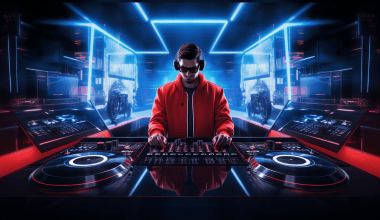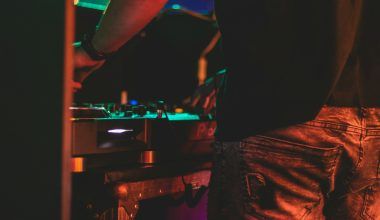Learning music at home is one of the best things you can do for yourself. It’s fun, relaxing, and you don’t need to go anywhere! You can play your favorite songs, sing along, and even create your own music. This blog will guide you step by step on how to learn music at home easily, whether you are a beginner or just brushing up on old skills.
Let’s explore how you can start this exciting journey from your home!
Why Learning Music at Home is Awesome
- Comfort of Home: No need to dress up or travel. You can practice in your pajamas!
- Learn at Your Speed: Go slow or fast—it’s all up to you.
- Saves Money: You don’t have to spend on classes or travel.
- Creative Freedom: Learn what you love, whether it’s guitar, piano, singing, or even composing songs.
Imagine sitting in your cozy corner, strumming a guitar or singing your heart out. Doesn’t that sound wonderful?
Step 1: Decide What You Want to Learn
Before you start, ask yourself, “What do I want to learn?”
- Learn to Sing: Perfect if you love singing along to your favorite songs.
- Play an Instrument: Guitar, keyboard, flute, or drums are all great options.
- Write Songs: For those who want to express themselves creatively.
- Learn Music Theory: Helps you understand how music works.
Pick one goal to start. Don’t worry, you can always add more later!
Step 2: Create Your Music Practice Space
Having a dedicated spot makes learning easier and more fun. Here’s what you’ll need:
- Quiet Place: Find a room where you won’t be disturbed.
- Good Lighting: So you can see your notes or screen.
- Chair and Table: For sitting comfortably while you practice.
- Music Stand: To hold your music sheets or tablet.
Your space doesn’t have to be fancy. Even a small corner works fine as long as you feel comfortable.
Step 3: Gather Your Tools
Here’s a list of basic tools for learning music at home:
- An Instrument: If you’re learning guitar, get a basic acoustic guitar. For piano, a simple keyboard will do.
- Learning Apps: Apps like Yousician, Simply Piano, or Smule are great for beginners.
- Notebook: For jotting down notes, lyrics, or tips.
- Internet: Access free tutorials and songs on YouTube.
Step 4: Start with Small, Easy Steps
Learning music is a journey. Start small to avoid feeling overwhelmed.
If You’re Singing:
- Practice humming your favorite tunes.
- Try simple songs like nursery rhymes or old classics.
- Learn basic breathing exercises to improve your voice.
If You’re Learning an Instrument:
- Start by learning the names of strings or keys.
- Practice basic chords (for guitar) or scales (for piano).
- Watch beginner tutorials on YouTube.
If You’re Writing Music:
- Start with short, simple lyrics.
- Use a keyboard or guitar to find melodies that match your words.
Remember, every big musician started small. Take it one day at a time.
Step 5: Use Free and Paid Resources
The internet is full of amazing tools to help you learn music at home. Some are free, while others charge a small fee.
Free Resources:
- YouTube: Channels like JustinGuitar, Piano Academy, and SingingSuccess have great lessons.
- Music Blogs: Websites offer beginner-friendly tips and tricks.
- Online Communities: Join groups on Facebook or Reddit to connect with other learners.
Paid Resources:
- Apps: Yousician, Simply Piano, and Flowkey offer structured courses.
- Online Classes: Platforms like Udemy or Coursera have affordable courses.
Step 6: Build a Daily Practice Routine
A little practice every day goes a long way! Here’s how to create a simple routine:
- Pick a Time: Morning or evening—whatever works best for you.
- Warm Up: Spend 5 minutes warming up. Sing scales or play basic chords.
- Practice for 20-30 Minutes: Focus on one thing, like a new song or technique.
- Record Yourself: Listen to your progress. It’s very motivating!
Don’t stress if you miss a day. Just keep going the next day.
Step 7: Learn Music Theory (It’s Not as Hard as It Sounds!)
Music theory helps you understand the “language” of music. Start with these basics:
- Notes: These are the building blocks of music.
- Chords: Groups of notes played together.
- Scales: Patterns of notes that create melodies.
- Timing: Learn to count beats in a song.
There are tons of beginner books and online videos to help you.
Step 8: Have Fun with Technology
Technology makes learning music at home super fun! Here’s how you can use it:
- Apps for Singing: Smule lets you sing karaoke with people worldwide.
- Recording Software: Audacity is free and lets you record and edit your music.
- Backing Tracks: Play along with pre-recorded tracks to feel like you’re in a band.
Step 9: Stay Motivated and Inspired
Sometimes you might feel stuck or bored. That’s normal! Here’s how to stay inspired:
- Watch videos of your favorite musicians.
- Try learning a song you love.
- Take breaks when you feel tired.
Music is meant to be fun, not stressful. Celebrate small wins, like mastering a chord or hitting a high note.
Step 10: Involve Friends and Family
Music is better when shared. Invite your family to listen to your progress or jam with friends who also play music. You can even perform a small concert at home!
Learning Music at Home for Kids
If you’re teaching kids, make it fun and playful:
- Use colorful instruments.
- Turn practice into a game with rewards.
- Sing songs they already know and love.
What to Do If You Get Stuck
Everyone faces challenges while learning something new. Here’s how to overcome them:
- Problem: Can’t play a song?
Solution: Slow down and practice it bit by bit. - Problem: Feel unmotivated?
Solution: Watch inspiring videos of musicians.
Remember, every challenge is a chance to grow.
Why Music at Home is Perfect for Busy People
Even if you’re busy, you can learn music at home. Here are some tips:
- Use short 10-minute practice sessions.
- Play music as a way to relax after work or school.
- Combine learning with fun, like singing along to your favorite songs.
Conclusion: Start Your Musical Journey Today!
Learning music at home is not just a skill—it’s a joy. It helps you express yourself, brings happiness, and even impresses your friends and family. Whether you want to sing, play, or compose, everything you need is right at your fingertips.
So, pick up that guitar, download a music app, or start singing in your living room. How to learn music at home is no longer a question—it’s something you can start right now!
Related Articles:
For further reading, explore these related articles:
- How to Become a Successful Music Artist in India in 2024?
- How AI Song Lyrics Are Changing the Way We Make Music
- Exploring Lossless Audio Formats: The Complete Beginner’s Guide
For additional resources on music marketing and distribution, visit Deliver My Tune.






